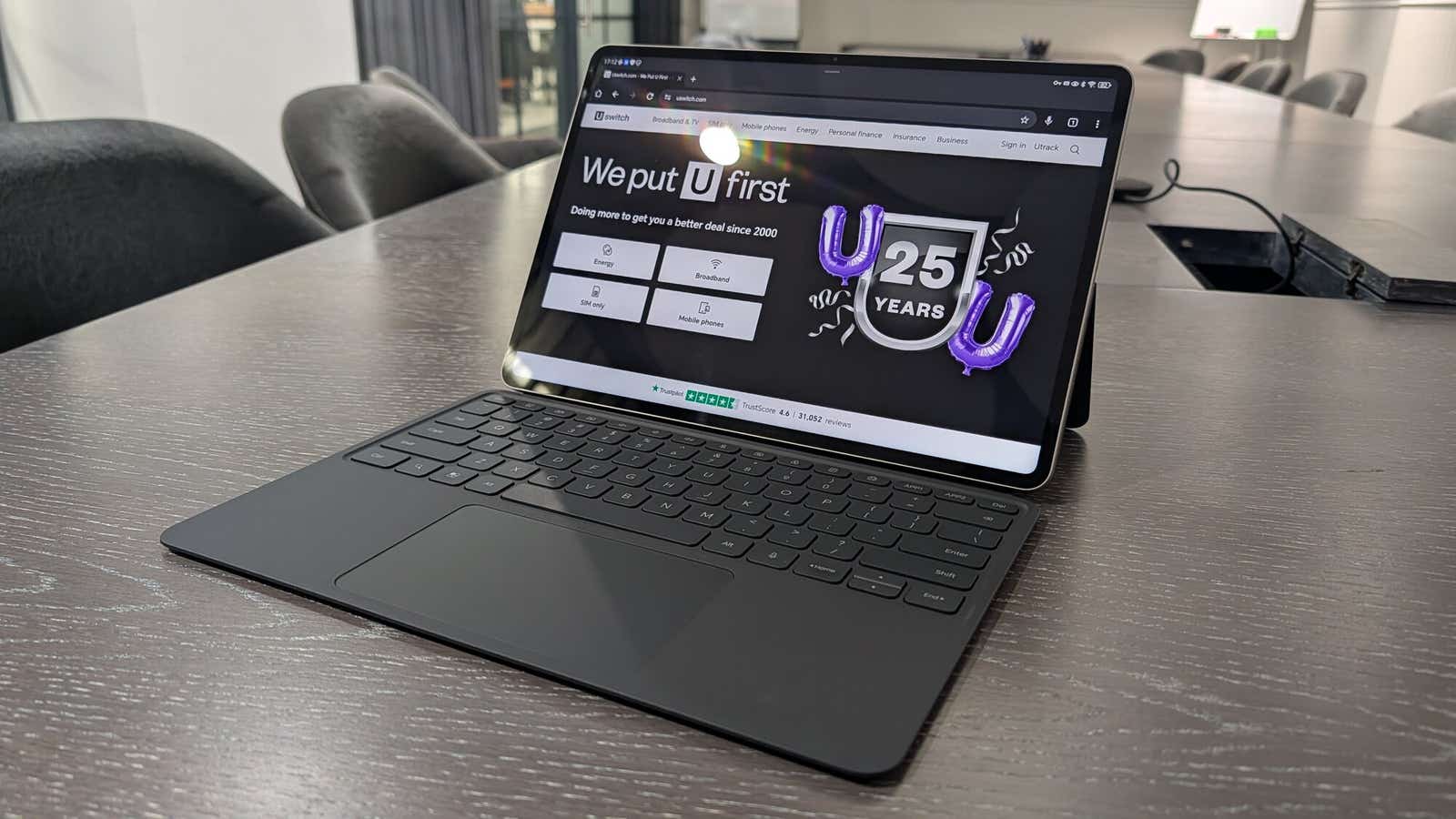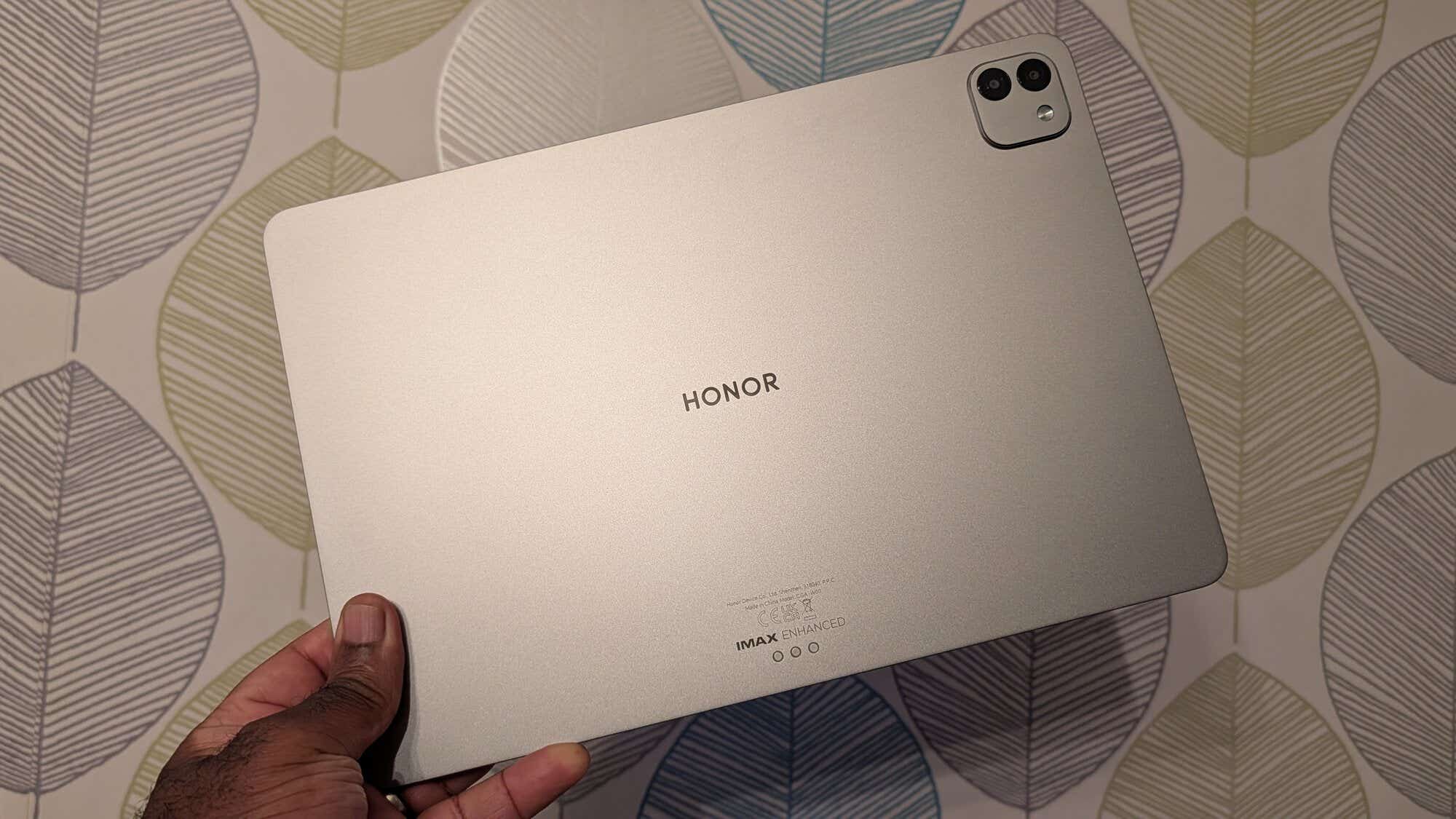Honor MagicPad 3 Review


Honor MagicPad 3 pros and cons
Huge display with silky 165 Hz refresh rate.
Hefty battery.
Impressive speaker setup.
LCD panel lacks punch of OLED rivals.
Limited software support lifespan.
The tablet market is little short of a minefield at the moment. An array of attractive slabs are available - both Android and Apple-flavoured - in a multitude of shapes and sizes, all promising to ‘level up your productivity’ or be the perfect media consumption device.
Honor’s tablet sequel arrives with clear intent - to challenge the best by pairing an expansive display with cutting-edge hardware, and one of the largest batteries in a modern device.
No mean feat in itself, but for the MagicPad 3 to have a seat at the tablet high table, it needs to prove its credentials over past models, as well as maintain pace with current competition.
Let’s see how it fares in our Honor MagicPad 3 review.

Design and specifications
At first glance, the MagicPad 3 cuts a striking profile. It runs exceptionally slim at just 5.79 mm, making it one of the thinnest large tablets on the market.
Despite housing a substantial 12,450 mAh battery, overall weight remains manageable at around 595 g, which translates to comfort – both in portrait or landscape use – for extended sessions.
The materials and construction are carefully considered, with a silicon-carbon reinforced frame to deliver both rigidity and lightness, with smooth edges that lend a confident and sturdy feel.
The rear surface is clean and minimalist, broken only by a modest camera housing in the top-right corner.
It feels unmistakably premium and bears no hint of the flex or creak sometimes found in lighter, thinner tablets.
The overall aesthetic hews close to the MagicPad 2, though refinements in frame and finish give this new model a slightly more unified and professional look – with a single gun-metal grey colour variant.
The MagicPad 3 is powered by the Snapdragon 8 Gen 3 platform, paired with 16 GB of RAM and 512 GB of onboard storage – the only specification on UK shores.
The upgrade in Qualcomm’s chipset represents a notable leap over last July (2024)’s MagicPad 2, which had the Snapdragon 8+ Gen 1 at its heart.
Performance gains are tangible – both in relative and absolute terms – across gaming, multitasking and creative workloads alike.

Battery capacity is healthy at 12,450 mAh and with rapid 66 W wired charging support, whilst connectivity includes support for the latest Wi-Fi 7 standards, as well as Bluetooth 5.4 and USB-C for charging and hooking up to external devices.
Accessories are available in the form of a detachable keyboard and Honor’s Magic Pencil, aimed squarely at those who want laptop-style productivity.
The camera arrangement is modest but perfectly adequate – a simple rear duo plus a front camera that delivers where it counts.
There is no 3.5 mm headphone jack, a detail that might sting more than usual among younger users who see plug-in listening as both practical and stylish. With zero latency, dependable quality and no battery anxiety, their absence here feels like a missed opportunity on a device built for media.

Display and audio
Given the display is such a key facet of the tablet experience, the honest feedback is that the MagicPad 3 both shines and stumbles here.
A 13.3-inch display running at 3200 × 2136 resolution with a 165 Hz refresh rate makes a magnificent impression, impressing with clarity, responsiveness and size.
That being said, the panel technology does harbour a notable compromise in the choice of an LCD display. Competing devices at similar price points, such as Samsung’s Galaxy Tab S10+ or Apple’s iPad Pro, use OLED screens that deliver deeper blacks and superior contrast.
The MagicPad 3’s LCD effort here performs admirably, but does lack some of the richness and inky tones expected from a premium tablet.
For context, last July’s MagicPad 2 (2024) launched with a 12.3-inch 144 Hz OLED panel, so this year’s shift to a larger 13.3-inch LCD trades black depth for size and refresh rate bumps.
Where the MagicPad 3 goes a step further, however, is in its IMAX Enhanced certification - a badge that few tablets can claim.
This indicates the display and audio meet IMAX’s visual and sound standards, meaning the tablet can reproduce compatible films and content in the original IMAX aspect ratio with tuned contrast, clarity and spatial sound.
For viewers, it translates to a more cinematic presentation when watching supported content from platforms such as Disney+ or streaming services that do offer IMAX Enhanced titles, with visuals filling the entire screen and an immersive audio soundstage.
The result is a movie experience that feels richer and more immersive than typical tablet playback, even if the underlying panel technology remains that of an LCD.
In daily use, the display’s responsiveness and colour tuning stand out. Scrolling through lengthy reports, flicking between social feeds or simply browsing feels immediate and effortless.
Colours are lively without straying into oversaturation, giving films and games a cinematic feel while keeping text crisp and easy to read.
When it comes to brightness, Honor rates the panel at 700 nits typical, with up to 1000 nits available in High Brightness Mode (HBM).
That’s strong enough for most indoor environments and moderately bright outdoor settings. Under direct sunlight the screen remains usable, though reflective glare is harder to escape on such a large surface.
The refresh rate is excellent, but the overall picture lacks the punch expected at this price tier. It’s essentially the same story as with the MagicPad 2’s display - good for productivity and general use, but still trailing OLED-based competition in visual impact.
Audio performance, in contrast, is a more unmitigated triumph. Honor crams in an eight-speaker array that delivers volume, depth and clarity well beyond expectations for a tablet.
Voices come through clearly on video calls, while music playback enjoys a sense of spatial width.
Watching Fantastic Four on the MagicPad 3 via speakers alone is surprisingly satisfying, with minimal body rattle or reverberation at anything below full volume, and audio swirling around you from all angles.
For critical listening, wireless or USB-C headphones remain the better option, but the inbuilt setup is more than capable for daily use.

Camera capabilities
On the rear, a 13-megapixel primary sensor with an f/2.0 aperture and autofocus is joined by a 2-megapixel effort with f/2.4 macro lens with fixed focus.
The front-facing camera is a 9-megpaixel f/2.2 unit, also fixed-focus, positioned centrally when held landscape and ideal for video calls.
There is no optical image stabilisation (OIS) or telephoto capability - a common omission in today’s tablets.
The rear sensor captures solid daylight images with acceptable sharpness and colour accuracy for casual snaps or document scanning, while the macro is serviceable for close-up detail, and adds a little something by the way of versatility.
In low light, results are average at best. Noise appears early in shadows, and colours tend toward desaturation.
The front camera fares better - albeit under good lighting. It is well suited for video calls and delivers balanced, flattering images in optimal conditions. In low light it struggles - detail softens and colours wash, but it remains usable in most indoor scenarios.
Video capture reaches up to 4K at 30 fps on the rear camera, though stabilisation is minimal and results vary by region. During a short walk in a quiet park, footage showed natural colours and audible ambient sound, but slight shakes were evident. This confirms the tablet’s role - occasional capture rather than dedicated content creation.
While the camera setup is modest, the design and performance around display, audio, battery and processing power remain the focus - the MagicPad 3 aims to deliver value where tablets are relied upon most.

Performance and software
The Snapdragon 8 Gen 3 ensures the MagicPad 3 runs confidently across all tasks. Productivity apps load quickly, multitasking is fluid and transitions between windows are seamless.
Running multiple large documents alongside video playback does little to slow it down. Compared with the MagicPad 2, day-to-day speed improvements are clear, and the newer chip handles heavier workloads without the occasional heat build-up seen in last year’s device.
Gaming performance is a highlight. Titles like Fortnite and Honkai: Star Rail run comfortably at high graphics settings, with the 165 Hz panel making fast-paced action feel especially responsive.
Extended play sessions of around 40 minutes revealed no major frame drops, though the device grows warm in the hand during sustained load.
Where the MagicPad 3 distinguishes itself is in its software design. MagicOS 9 has been slathered over Android 15 and then tweaked and tailored for large displays, presenting a genuine tablet interface rather than a smartphone layout writ large - a welcome departure.
The home screen supports flexible widget placement and a persistent dock for your most-used apps, giving it a more desktop-like flavour.
Multitasking is handled gracefully, with floating windows that can be resized and positioned freely. You can run up to four apps on screen at once – two side by side, with an additional pair in floating windows – and the tablet rarely stutters even under this load.
The taskbar and gesture controls are intuitive. Drag-and-drop is supported across apps, so you can pull text or images from a browser straight into a document or presentation.
A quick pinch gesture reveals all active windows at once, making it easy to swap between tasks without losing your place. This fluidity is essential for productivity, and the MagicPad 3 feels well optimised in this regard - it’s genuinely delivering close to desktop productivity, and at this price point it’s an impressive feature set for both hardware and software capability.
Accessory support rounds out the experience. The Smart Touch Keyboard boasts a full 6-row setup, clever reversible hinge to double as both protective case and stand, and magnetically attaches to the rear pins on the bottom of the MagicPad 3.
This handily unlocks a laptop-style desktop mode, complete with keyboard shortcuts and a sizeable trackpad - albeit night owls like me still suffer from an absence of backlit keys.
Honor’s Magic Pencil 3 is also supported, and adds value for creative users or those who prefer handwritten input.
Despite not managing to get hands-on with this as part of the review, Honor touts 4,096 pressure levels with tilt for natural line variation, ultra-low latency and ‘zero-pressure’ responsiveness, so even the lightest graze leaves a mark.
It snaps magnetically to the tablet’s flatten top edge for auto Bluetooth pairing and wireless charging, reaches a full charge in about 45 minutes, and is rated for up to 10 hours of continuous writing - the pitch is seamless sketch-to-note flow with minimal faff.
Software longevity is another aspect to highlight – as it’s not quite the longevity we’re looking for in terms of support.
Honor indicates a single major Android update and around two years of security patches for the MagicPad 3 – shorter than their smartphone timelines, as well as offerings from competitors - so those seeking a device they’re not needing to upgrade for a decade may find this a drawback.

Check out the latest mobile deals on Uswitch
Battery life and charging
The battery story is straightforward - the Honor MagicPad 3 is a tablet that lasts.
With a 12,450 mAh battery, endurance is excellent. A decent amount of daily use - browsing, streaming and productivity on Word, Excel and PowerPoint - stretches well beyond a single day, often close to two.
For lighter routines, three days between charges is possible – broadly in line with the MagicPad 2’s already-impressive longevity, though the newer, more efficient chipset squeezes slightly better results in extensive real-world use.
Streaming video for extended periods shows its stamina. Watching a series through on a weekend trip still leaves charge in the tank. This makes it one of the few tablets you can trust to leave the charger behind.
When the battery does run low, 66 W wired charging support ensures a quick top-up.
A half-hour connected to the mains delivers enough to continue comfortably for hours more. The convenience of rapid charging softens the blow of carrying such a large battery, keeping downtime to a minimum.
Honor MagicPad 3 UK pricing and availability
In the UK and at the time of writing, the Honor MagicPad 3 is priced from £599.99, placing it against the iPad Air and Galaxy Tab S series, with early buyers still able to benefit from generous incentives.
Honor is offering a £100 discount voucher - dropping the effective price to £499.99 - and bundling both the Magic Pencil 3 stylus (worth about £85.99) and the Smart Touch Keyboard (worth around £99).
In total, that is close to £285 of added accessories in addition to the £100 saving - making for a pretty formidable package for those willing to take the leap.
Even if priced against more established rivals, the effective cost and bundled accessories make the MagicPad 3 an especially tempting option for students and professionals looking for productivity out of the box.

Final verdict
The Honor MagicPad 3 is a serious entrant in the contentious premium tablet space, with strengths in an expansive, fluid display, cracking speakers, top-tier processor and a battery that outlasts most rivals.
There are admitted shortcomings, however. The choice of an LCD panel - vivid and smooth but lacking the depth and colour contrast of OLED competitors - might be one of cost, but it’s a compromise in a fundamental area.
The cameras are serviceable, the narrow software support window is disappointing, and the lack of a headphone jack feels a tad frustrating at a time when wired cans are making a meaningful comeback - however USB-C provides some solace.
Yet in the round the MagicPad 3 is highly persuasive as Honor’s latest tablet effort manages to blend strong performance with one of the best large-screen experiences you can buy.
This makes it an excellent option for anyone who wants a robust and reliable tablet that is also incredibly versatile - making it deserving of serious shortlisting to anyone in the market for a premium slate at a less-than-premium price point.